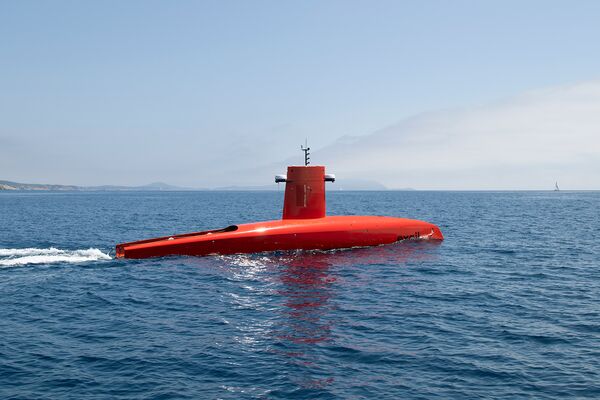
Exail's new transoceanic DriX O-16 unmanned surface vessel was put to sea for the first time on 29 May 2024. (Exail)
Exail's new DriX O-16 transoceanic unmanned surface vessel (USV) has successfully conducted its first sea trials.
Announcing the milestone on 5 June, Exail said the USV was put to sea for the first time on 29 May in La Ciotat, southern France. Initial sea trials were followed by a demonstration of the USV to selected partners and customers, including hydrographic institutes and navies, on 5 June, the company said.
Launched in public for the first time at the Oceanology International 2024 conference in London in March, Exail's DriX O-16 is the latest addition to the company's DriX family of USVs. It is also the largest off-the-shelf version – being twice the size of the baseline H-8 variant.
Exail said the USV has been designed for longer-duration operations of up to 30 days and out to a range of 3,500 n miles, and is particularly well-suited for full-ocean-depth scientific and hydrographic surveys, geophysical and unexploded ordnance surveys, and subsea critical infrastructure inspections that may require the deployment of multiple unmanned underwater assets. It can conduct both remote-controlled and supervised autonomous operations.
Drix O-16 has an overall length of 15.75 m, a displacement of 10.5 tonnes, and a top speed of up to 16 kt. Its larger size enables it to carry a wide range of payloads, including multibeam echosounders, sub-bottom profilers, and acoustic subsea positioning and communication systems. The USV features a customisable stern section for additional payload integration.
Looking to read the full article?
Gain unlimited access to Janes news and more...







